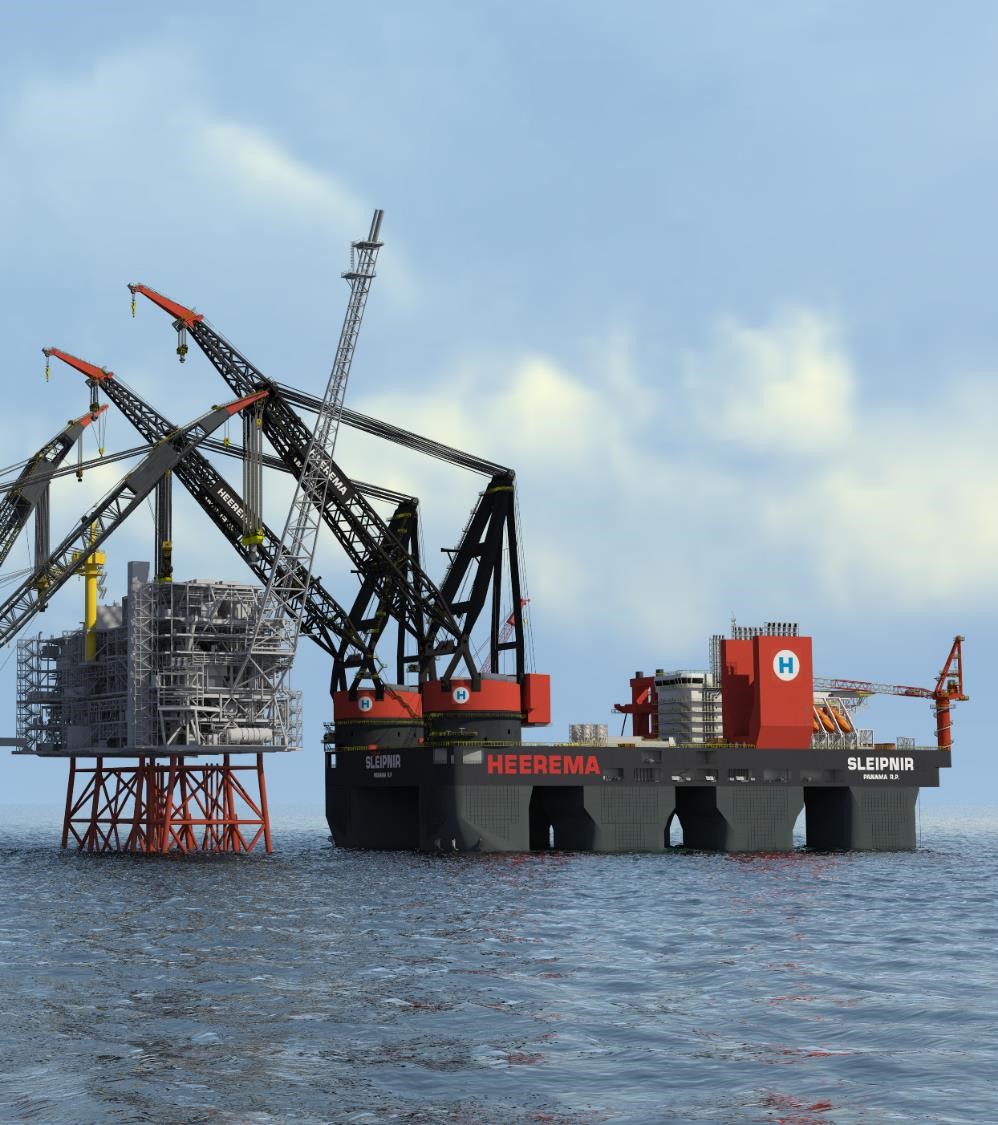January 17, 2022
At 220 meters long and 102 meters wide, Sleipnir entered service as the world’s largest crane vessel, with two 10,000-tonne revolving cranes. GE was chosen to provide a high-performance electrical power and propulsion system powerful enough to meet the operational energy needs of such a ‘sea giant’.
Challenge
Sleipnir’s career would be faced with critical operational roles, safely lifting and moving some of the largest assets at sea out in challenging deepwater conditions, from wind farm installation to rig decommissioning.
Playing such an important role in the offshore sector’s energy transition, it was important her own systems would be energy-efficient and reliable.
In addition to helping to reduce emissions through GE’s Ship’s Electric Grid power and propulsion solution, Sleipnir was the world’s first crane vessel with dual-fuel engines running on either marine gas oil (MGO) or liquefied natural gas (LNG).
Solution

GE’s solution includes an integrated electric propulsion and power network system, conceived and customized to meet requirements specific to the project:
- Generating and distributing electricity to power the vessel’s entire, considerable onboard systems, and therefore enabling its ability to perform on-contract.
- 12 sets of 8-megawatt (MW) generators, eight units of 5.5MW propulsion motors, medium-voltage switchboards, transformers, and MV7000 drives.
- Digital Suite Visor remote monitoring and diagnostics system.
- Entire power system designed for fault tolerance in accordance with Lloyd’s Register’s Rules and Regulations (DP AAA).
Benefits
Coupled with GE’s electric propulsion system, the vessel is able to achieve lower emissions when on operations, helping our customers get the job done competitively and sustainably.
- GE’s optimized power architecture is more compact than standard solutions, achieved through our SeaLab team’s system integration expertise.
- Benefitting from GE Power Conversion’s Digital Suite with advanced sensors connected in the network, to monitor the health of each piece of equipment in real time and signal possible malfunctions.
- Together, these measures result in a compact, yet highly sophisticated solution, which facilitates operations while helping to minimize downtime and increase availability.




